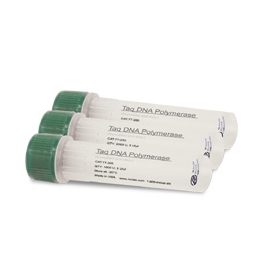 View full size
View full size
- Nucleic Acid Analysis
- Protein Analysis
- Biochemical Reagents
-
Enzymes
- Thermophilic DNA Polymerases
- Mesophilic DNA Polymerases
- Restriction Endonucleases
- Reverse Transcriptase and RNA Polymerases
- DNA/RNA Ligases
- RNases
- Proteases
- Nucleases
- Kinases
- Phosphatases and Sulfurylases
- DNA Repair Proteins
- Single-Stranded DNA Binding Proteins
- Chaperon Proteins and Disulfide Bond Isomerase
- Others
- Gene editing
- Molecular cloning
- Clinical diagnostics
- Human Identification STR kits
- Laboratory instruments
- Software
- A&A Biotechnology
- AdvancedSeq
- BioDynami
- Plant Cell Technology
News
-
XXXV. Izakovičov memoriál 2025
We are pleased to announce our participation in the prestigious XXXV. Izakovič Memorial 2025, which will take place on October 8–10, 2025 at the Grandhotel Praha, Tatranská Lomnica. The Izakovič Memo...
Read more -
1st Czechoslovak Congress of Medical Genetics 2025
In the spring, we will participate in the 1st Czechoslovak Congress of Medical Genetics, which will take place from April 2–4, 2025, at the Cultural and Congress Center Elektra in the spa town of Luha...
Read more -
RANK 2025
Visit us at the 19th edition of the RANK 2025 conference, which will take place on March 19th and 20th at the Zlatá Štika Hotel in Pardubice. The conference is organized by the Czech Society of Clinic...
Read more
 View full size
View full size
Description:
Taq-Klenow is modified from full length Taq-Klenow by truncating its N-terminus, with a molecular weight of 61kDa. Compared with regular Taq-Klenow, this truncated version is deficient in 5'->3' exonuclease activity, but is more thermostable and has higher fidelity in PCR amplification.
Application:
- PCR (ordinary and high-throughput)
- Primer Extension
- Microarray Analysis
- Denaturing high performance liquid chromatography (DHPLC)
Source:
A recombinant E. coli strain carrying the Taq-Klenow gene from the thermophilic organism Thermus Aquaticus YT-1.
Supplied with:
10x Taq PCR Buffer (no dNTP)
Supplied in:
20 mM Tris-HCl
100 mM NaCl
1.0 mM DTT
0.1 mM EDTA
Stabilizer
50% Glycerol
pH 7.5 @ 25°C
Unit Definition:
1 unit is defined as the amount of enzyme that will incorporate 10 nmol of dNTPs into acid-insoluble material in 30 minutes at 75°C.
PCR Guidelines:
Taq-Klenow is the original and most commonly used PCR enzyme. Taq excels at amplifying shorter (<5 kb) sequences from low-complexity template sources and produces robust yields with little or no optimization of reaction conditions. Consider the following guidelines when designing PCR strategies using Taq DSC 2.0 DNA Polymerase.
1. DNA Template: Although extensive purification of PCR templates is typically not necessary, care should be taken with crude or partially purified DNA sources as handling and chemical agents can adversely affect the PCR process. Exposure to short-wave UV light or other DNA damaging agents should be avoided, as should high ionic strength, detergents such as SDS, loading dyes and phenol. In order to prevent contamination from previous PCR reactions, consider setting up reactions in a positive-pressure hood and with aerosol barrier pipet tips. In a typical 25 cycle PCR, 104 copies of target sequence will yield reproducible amplification product. This corresponds to roughly 0.1-1 ng/ml (final concentration) of plasmid DNA, and 1-10 µg/ml of genomic DNA. The use of lower DNA concentrations typically produces less non-specific product, while higher concentrations can allow for fewer cycles and lower mutation rates.
2. Primer Design: Ideally, oligonucleotide primers are 15-30 bases in length, nearly 50% G+C, and have equal (+/- 3°C) annealing temperatures. The use of software to detect self-complementary or hairpin-prone regions is advised and is offered as a service by some synthesis providers. Note that although the 5'-terminus of the primer may contain untemplated sequence, the 3' end must match perfectly. Typical oligonucleotide concentration in the reaction is 0.1-0.5µM.
3. Magnesium: Magnesium is a critical component of the PCR reaction though its concentration can be modulated to promote various effects. Generally, 1.5-2.0mM Mg2+ is targeted, but higher concentrations (up to 5mM) may be used to stimulate the yield of reactions at the expense of fidelity. The converse is also true - lower magnesium concentrations will promote higher- fidelity products with a lower overall amplification yield. Note that certain reaction components, in particular template DNA and oligonucleotides, may contribute chelating agents to the reaction which could lower the effective magnesium concentration and starve the reaction.
4. dNTPs: Generally, a final concentration of 100-200µM dNTPs is employed, though higher concentrations may stimulate yields (particularly with longer targets) and lower may offer increases in fidelity. Taq DSC 2.0 DNA Polymerase can also incorporate and read through deoxy Uridine and Inosine, two analogs used in certain applications.
5. Taq DSC 2.0 Polymerase: 1 unit/50µL reaction (20 U/mL) is typical, though additional enzyme may be added to stimulate yields. Taq DSC 2.0 DNA Polymerase extends a DNA template at approximately 1-2000 nucleotides/minute, so it is recommended that 30-60 seconds of extension time should be provided per kb, per cycle. Appropriate extension temperatures range from 68-72°C. Because Taq DSC 2.0 DNA Polymerase exploits the natural affinity of a DNA polymerase for a duplex DNA fragment to promote its hot-start function, it does not require an extensive initial denaturation step to activate the polymerase.
Typical 50 µl Reaction:
On ice, prepare each of the following master mixes, combine, and place in heated (to 94°C) thermal cycler:
2x DNA/Oligonucleotide Master Mix:
1.0 µl 10 mM dNTPs
1.0 µl 10 µM Forward Primer
1.0 µl 10 µM Reverse Primer
1.0 µl 500 ng/µl genomic DNA
21 µl Type I Water
2x Enzyme/Buffer Master Mix:
5.0 µl 10x Taq PCR Buffer (no dNTP)
0.2 µl 5 U/µl Taq DSC 2.0 DNA Polymerase
19.8 µl Type I Water
Recommended Storage Condition: -20°C
Cart
Payment gate



